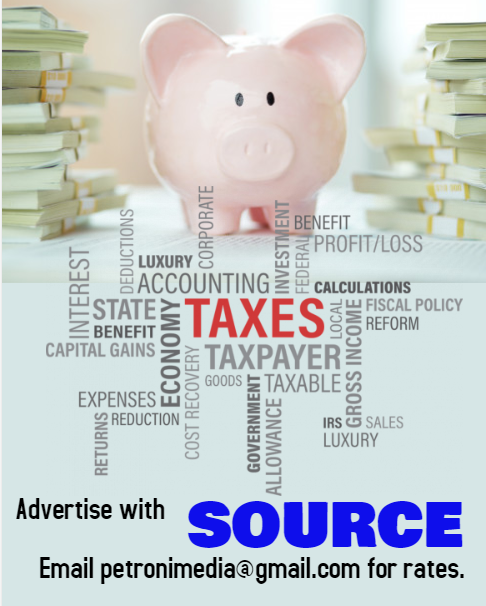The following is a press release by the Internal Revenue Service
***
[broadstreet zone=”59982″]
WASHINGTON ― The Internal Revenue Service today reminded taxpayers who owe 2020 taxes that there are different ways to pay through IRS.gov, including payment options for many people who can’t pay in full.
File by May 17
The most important thing everyone with a tax bill should do is file a return by the May 17 due date, even if they can’t pay in full, or request a six-month extension to avoid higher penalties for failing to file on time.
Though automatic tax-filing extensions are available to anyone who wants one, these extensions don’t change the payment deadline. It is not an extension to pay. Visit IRS.gov/Extensions for details.
Usually anyone who owes tax and waits until after that date to file will be charged a late-filing penalty of 5% per month.
So, if a tax return is done, filing it by May 17 is always less costly, even if the full amount due can’t be paid on time.
Free File is an easy, quick way to file that is available to anyone who makes $72,000 or less and is available on IRS.gov.
[broadstreet zone=”59983″]
Pay what you can
Interest, plus the much smaller late-payment penalty, will apply to any payments made after May 17. Making a payment, even a partial payment, will help limit penalty and interest charges. The fastest and easiest way to pay a personal tax bill is with Direct Pay, available only on IRS.gov. For a rundown of other payment options, visit IRS.gov/Payments.
The IRS urges taxpayers to first consider other options for payment, including getting a loan to pay the amount due. In many cases, loan costs may be lower than the combination of interest and penalties the IRS must charge under federal law. Normally, the late-payment penalty is one-half-of-one percent (0.5%) per month. The interest rate, adjusted quarterly, is currently 3% per year, compounded daily.
If a loan isn’t possible, the IRS can often help.
[broadstreet zone=”53130″]
Online payment plans
Most individual taxpayers qualify to set up an online payment agreement with the IRS, and it only takes a few minutes to apply. Applicants are notified immediately if their request is approved. No need to call or write to the IRS. The IRS notes that Online payment plans are processed more quickly than requests submitted with electronically-filed tax returns.
There are two main types of Online payment plans. They are:
- Short-term payment plan – The payment period is 120 days or less and the total amount owed is less than $100,000 in combined tax, penalties and interest. A 180-day payment plan is also possible, but it’s only available by calling or writing the IRS. Either way, there’s no fee for setting one up, though interest and the late-payment penalty continue to apply.
- Long-term payment plan – The payment period is longer than the short-term payment plan. Payments are made monthly, and the amount owed must be less than $50,000 in combined tax, penalties and interest. If the IRS approves a long-term payment plan, also known as an installment agreement, a setup fee normally applies. But low-income taxpayers may qualify to have the fee waived or reimbursed. In addition, for anyone who filed their return on time, the late-payment penalty rate is cut in half while an installment agreement is in effect. This means that the penalty accrues at the rate of one-quarter-of-one percent (0.25%) per month, instead of the usual one-half-of-one percent (0.5%) per month.
Taxpayers who do not qualify for an online payment agreement may still be able to arrange to pay in installments. See IRS.gov/payments/payment-plans-installment-agreements for more information.
[broadstreet zone=”59948″]
For some, but not all, struggling taxpayers, three other options are available:
Delayed collection
If the IRS determines a taxpayer is unable to pay, it may delay collection until their financial condition improves. However, the total amount owed will still increase because penalties and interest are charged until paid in full. Taxpayers can request a delay by calling the phone number on their notice or 800-829-1040.
Penalty relief
Some taxpayers qualify to have their late-filing or late-payment penalties reduced or eliminated. This can be done on a case-by-case basis, based on reasonable cause.
Alternatively, where a taxpayer has filed and paid on time during the past three years, the IRS can typically provide relief under the First Time Abatement program. Visit IRS.gov/penaltyrelief for details.
[broadstreet zone=”59947″]
Offer in Compromise
Some taxpayers qualify to settle their tax bill for less than the full amount due, through an offer in compromise. Though there is typically a $205 non-refundable application fee, it is generally waived for low-income taxpayers, and for offers based on doubt as to liability. The Offer in Compromise Pre-Qualifier tool can help determine eligibility for anyone interested in applying.
Taxpayers can securely access their federal tax account information at IRS.gov/account. Among other things, this includes viewing any amount due and payment history.
The IRS reminds taxpayers that they have rights and protections throughout the collection process.


